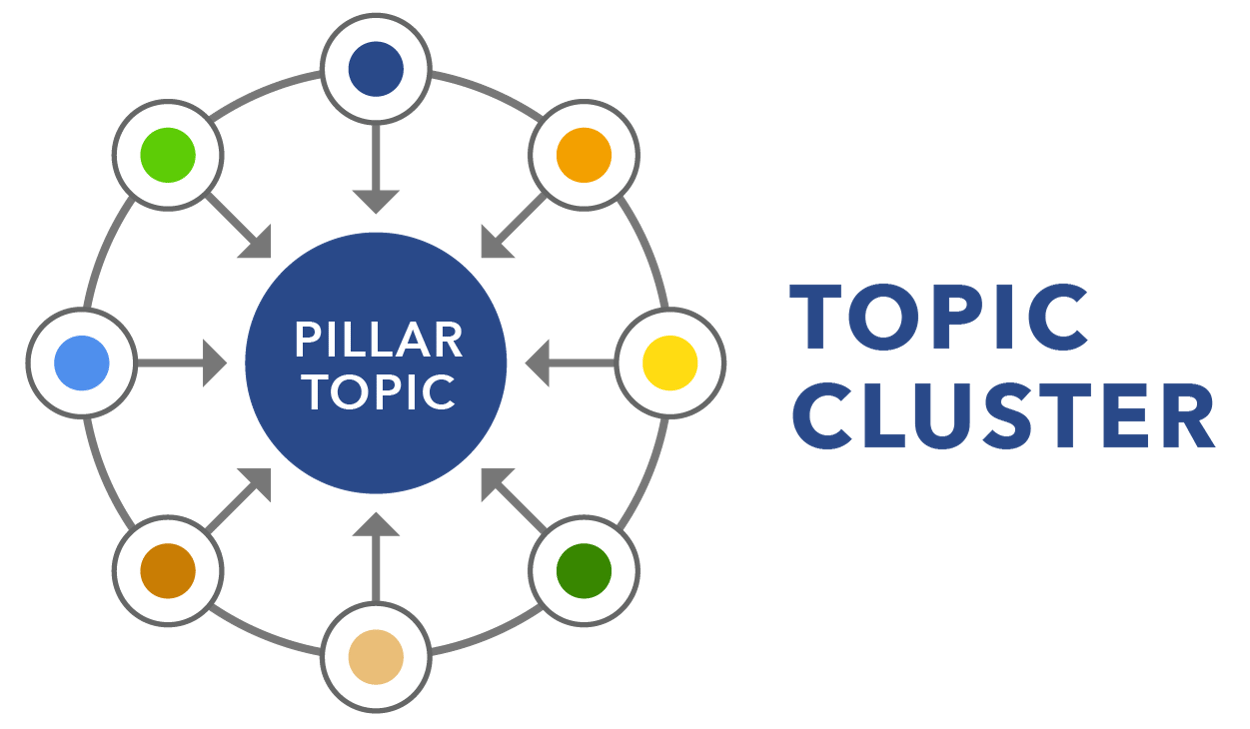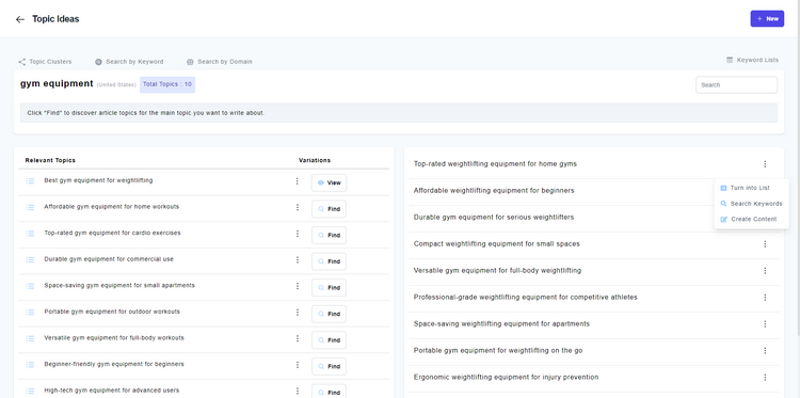If you’re looking to improve your website’s search engine ranking and visibility, then you need to know about Topic Clusters. This SEO strategy involves creating a group of related content around a central topic, also known as a “pillar.” By doing so, you can establish yourself as an authority in your industry, increase your website’s relevance, and provide a better user experience.
In this article, we’ll explore the power of Topic Clusters for SEO and provide a step-by-step guide on how to create them. We’ll cover everything from understanding user intent and keyword research to creating high-quality content and measuring your success. So, let’s get started!

Table of Contents
1. What are Topic Clusters and Why Do They Matter?
2. Understanding User Intent and Keyword Research
3. How to Choose the Right Topic for Your Pillar Content
4. Creating and Optimizing Your Pillar Content
5. Identifying Related Subtopics for Your Cluster Content
6. Best Practices for Creating High-Quality Cluster Content
7. Internal Linking Strategy for Topic Clusters
8. Measuring the Success of Your Topic Clusters
9. Common Mistakes to Avoid When Creating Topic Clusters
10. Keeping Your Topic Clusters Up-to-Date and Relevant
11. The Future of SEO with Topic Clusters
What are Topic Clusters and Why Do They Matter?
Before we dive into the nitty-gritty of creating Topic Clusters, let’s first define what they are. A Topic Cluster is a group of related content that revolves around a central topic, also known as a “pillar.” The is a comprehensive piece of content that covers the topic in-depth, while the cluster content covers related subtopics in more detail.
So, why do Topic Clusters matter? For starters, they can improve your website’s structure and make it easier for search engines to crawl and index your content. They also help to establish your website as an authority in your industry by covering a topic comprehensively. Additionally, Topic Clusters can improve the user experience by providing relevant and valuable content to your audience.
For example, let’s say you run a cooking blog. Your pillar content, or pillar page, could be a comprehensive guide to baking, while your cluster content could cover related subtopics such as different types of flour, baking techniques, and recipe ideas. By creating a Topic Cluster around baking, you’re providing your audience with a one-stop-shop for all things baking, which can help to increase engagement and reduce bounce rates.

Understanding User Intent and Keyword Research
Before you start creating your Topic Clusters, it’s essential to understand user intent and conduct keyword research. User intent refers to the reason why someone is searching for a particular keyword or phrase. By understanding user intent, you can create content that meets their needs and provides value.
“The heart of a coherent content strategy is the deliberate creation of topic clusters, a group of interlinked articles that cover a single topic Algorithmically, this signals to search engines that your website is a valuable resource, and it can help boost your site’s visibility and search engine ranking.”
Rand Fishkin, Founder of Moz
How to Choose the Right Topic for Your Pillar Content
Choosing the right topic for your pillar content is crucial to the success of your Topic Clusters. When choosing a topic, it’s essential to consider your business goals, target audience, and keyword research. Ideally, your topic should be relevant to your business, have a high search volume, and align with user intent.
To validate your topic choice, you can use tools such as Google Trends or Wordze. These tools can help you to identify the search volume and competition for a particular keyword or phrase. Additionally, you can validate your topic choice by conducting a content audit to see what topics have already been covered on your website and where there are gaps in your content strategy.
Creating and Optimizing Your Pillar Content
Once you’ve chosen your topic, it’s time to create your pillar content. Your pillar content should be a comprehensive guide to your chosen topic, covering all the subtopics and providing value to your audience. When creating your pillar content, it’s essential to focus on quality, relevance, and optimization.
To optimize your pillar content, you should use header tags, meta descriptions, and image alt text. You should also include internal links to your cluster content and other relevant pages on your website. Additionally, you should ensure that your pillar content is mobile-friendly, loads quickly, and is easy to read.
Identifying Related Subtopics for Your Cluster Content
Once you’ve created your pillar content, it’s time to identify related subtopics for your cluster content. To do this, you can use tools such as Google Autocomplete, or Wordze. These tools can help you to identify related keywords and phrases that your audience is searching for.
When identifying subtopics, it’s essential to focus on relevance and user intent. Your subtopics should be closely related to your pillar content and provide value to your audience. Additionally, they should align with user intent and provide a solution to a problem or answer a question.
How to create a topic cluster? Here is how Wordze can help you find topic and subtopic ideas…

Best Practices for Creating High-Quality Cluster Content
Creating high-quality cluster content is just as important as creating high-quality pillar content. Your cluster content should be informative, engaging, and optimized for search engines. When creating your cluster content, it’s essential to focus on quality, relevance, and optimization.
To optimize your cluster content and enhance its search engine visibility, consider implementing several key strategies. These techniques will not only improve your content’s ranking but also create a better user experience.
First, utilize header tags (H1, H2, H3, etc.) to structure your content. Properly formatted headers help search engines understand the hierarchy and context of your content. The H1 tag should be reserved for the main title, while H2 tags should be used for major sections and H3 tags for subsections. This organization makes it easier for both users and search engines to navigate your content.
Next, craft unique and informative meta descriptions for each cluster content page. A well-written meta description can significantly impact your click-through rate, as it is the snippet displayed in search engine results. Keep your meta descriptions between 50-150 characters, and include your target keywords.
Image alt text is another crucial element for content optimization. Alt text provides context for images, allowing search engines to understand their relevance. Moreover, it ensures that your content remains accessible to users who rely on screen readers or have images turned off in their browsers. When writing alt text, be concise and descriptive, and incorporate your target keywords where appropriate.
Internal linking is an effective way to boost your site’s SEO and user experience. By linking to your pillar content and other relevant pages within your website, you create a robust internal linking structure. This practice helps search engines crawl and index your site more efficiently while providing users with additional resources and context.
To ensure optimal user experience, make your cluster content mobile-friendly and quick to load. Utilize responsive design to adapt your content for various devices and screen sizes. Moreover, optimize your images, minimize HTTP requests, and leverage browser caching to enhance page load times.
Lastly, prioritize readability. Use clear and concise language, break up text with subheadings and bullet points, and maintain a consistent font size and line height. These adjustments will make your content more inviting and accessible to a broader audience.
Summary of Best Practices
In summary, optimizing your cluster content involves several key strategies, including:
- Using header tags (H1, H2, H3, etc.) for structure
- Crafting unique and informative meta descriptions
- Implementing image alt text
- Engaging in internal linking
- Ensuring mobile-friendliness and quick load times
- Prioritizing readability
By incorporating these techniques, you can significantly improve your cluster content’s visibility, user experience, and overall SEO performance.
Internal Linking Strategy for Topic Clusters
Internal linking is crucial to the success of your Topic Clusters. By linking your pillar content to your cluster content and vice versa, you can create a strong internal linking structure that provides value to your audience and improves your SEO.
When creating your internal linking strategy, it’s essential to use descriptive anchor text and link to relevant content. Additionally, you should ensure that your internal links are varied and natural, and that they provide value to your audience.
Measuring the Success of Your Topic Clusters
Measuring the success of your Topic Clusters is crucial to improving your SEO strategy. By tracking organic traffic, search engine rankings, and engagement metrics, you can identify what’s working and what’s not and make data-driven decisions.
To measure the success of your Topic Clusters, you can use tools such as Google Analytics. These tools can help you to track your organic traffic, search engine rankings, and engagement metrics, and provide insights into how your audience is interacting with your content.
Common Mistakes to Avoid When Creating Topic Clusters
Creating Topic Clusters can be a complex process, and there are several common mistakes to avoid. These include keyword stuffing, thin content, and poor internal linking. To avoid these mistakes, it’s essential to focus on quality, relevance, and optimization.
Additionally, you should ensure that your Topic Clusters provide value to your audience and align with user intent. By avoiding these common mistakes, you can create high-quality Topic Clusters that improve your SEO and provide value to your audience.
Keeping Your Topic Clusters Up-to-Date and Relevant
Keeping your Topic Clusters up-to-date and relevant is crucial to maintaining their success. By monitoring changes in search engine algorithms, industry trends, and user behavior, you can ensure that your Topic Clusters remain relevant and provide value to your audience.
To keep your Topic Clusters up-to-date, you should regularly review and update your content, monitor your analytics, and stay up-to-date with industry trends. Additionally, you should ensure that your Topic Clusters are optimized for mobile devices, load quickly, and are easy to read.
The Future of SEO with Topic Clusters
In conclusion, Topic Clusters are a powerful SEO strategy that can improve your website’s search engine ranking and visibility. By creating a group of related content around a central topic, you can establish yourself as an authority in your industry, increase your website’s relevance, and provide a better user experience.
By following the best practices and tips outlined in this article, you can create high-quality Topic Clusters that provide value to your audience and improve your SEO. So, what are you waiting for? Start creating your Topic Clusters today and take your SEO strategy to the next level!
FAQs: Creating Topic Clusters and Keywords
1. What are topic clusters and why are they important for SEO?
Topic clusters are a group of interlinked web pages that cover a broad topic and its subtopics. They help search engines understand the context and relevance of your content, making it easier for users to find your site through search queries. By creating topic clusters, you can establish yourself as an authority in your niche, improve your search engine rankings, and increase organic traffic to your site.
2. How do I choose the right keywords for my topic clusters?
Choosing the right keywords for your topic clusters involves researching and selecting relevant, high-volume, and low-competition keywords. Start by brainstorming a list of potential keywords related to your topic. Then, use keyword research tools like Google Keyword Planner or Wordze to identify the most popular and relevant keywords. Finally, group your keywords into clusters based on their relevance and search intent.
3. What are some best practices for creating topic clusters?
Some best practices for creating topic clusters include:
- Choosing a broad, overarching topic that is relevant to your business or industry.
- Researching and selecting relevant keywords for each cluster.
- Creating high-quality, in-depth content for each cluster and subtopic.
- Interlinking your content within each cluster and to other relevant clusters.
- Optimizing your content for search engines by including your keywords in strategic places like the title, headers, and meta descriptions.
- Monitoring and updating your content regularly to ensure it remains relevant and up-to-date.
